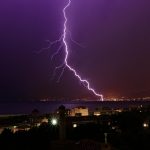If you’ve ever heard of Blaca on the island of Brač, chances are the word associated with it was “desert,” and it has nothing to do with sand, dunes, or camels.
I was born and raised in Croatia, and to be frank with you, it took me a while to realise what the name “Pustinja Blaca” meant. I mean, in the Croatian language, the only meaning of the word “pustinja” I was aware of was the already mentioned desert. However, there is another meaning for it, one that might be translated into English as a hermitage monastery, a place that doesn’t have a lot of people, and which is practically deserted. The people who have lived there have decided to live their lives away from civilisation, dedicated to prayer and their spiritual lives.
Marko Tarandek writes for Punkufer about the monastery, explaining its rich past. It was founded in the 16th century, on a very distant piece of land between Bol and Milna. Its founders were the Glagolitic priests, a group of Christian priests that operated between the ninth and the nineteenth centuries and used the Glagolitic script and Old Church Slavonic language.
A group of those priests, who weren’t a united organisation, ran from the Turkish occupation of Poljica to Brač and began their monastery there. Their first refuge was a cave, and after some time of living in the cave and cultivating the land around it, they were permitted to build a monastery and a church. And so they built it right on the rock where their original cave was, adding certain necessary objects, and later expanding to almost luxurious accommodation (luxurious for the 16th century, of course). The first record of a church being built there is from 1588.
The priests proved to be excellent agriculturalists, able to take advantage of every square metre of the soil. That contributed to the creation of an agricultural collective, based on the fair distribution of the gains and joint ownership. More and more people came to participate, which led to the development of this part of the island (please consult the map to see how far away from any of the modern places on Brač it is). They made their wine (of course) and honey, but they also printed books and hosted numerous astronomers, as they had a famous observatory. They needed to be able to trade their goods, so the priests also owned three sailboats (again, look at the map: the monastery is not really THAT close to the coast!), which sailed all over the Mediterranean.
Although Blaca was formally a monastery, it didn’t belong to any specific church order. They were permitted by the Hvar-Brač bishop to decide on their own who they wanted to let into the monastery. The brothers chose their leader, who took care of the monastery’s business – and at some point, their business was doing so well that the brothers who were supposed to be hermits, hard at work and thinking, had servants and people working on their land! The last family to manage the monastery were the Miličević priests, known for their work in astronomy (they even have two asteroids named after them, Miličević and Brač). In 1963, the last member of the family, don Nikola Miličević, passed away, and the monastery was closed for business as a monastery and became a museum.
You can visit the Blaca museum, but prepare yourself because it won’t be that easy. There are two ways to get to it: one way is by car from the north (you can park around a kilometre away from the monastery, and you have to walk the path the rest of the way), or you can take your boat to the so-called Popova vala (Priest’s bay), and then walk uphill to the monastery (it will take you 45 minutes or so to make it there).
The museum is open every day of the week, except on Mondays, and there’s no bar or restaurant at the museum, so make sure you have enough water to walk there and back to your ride, especially if you’re going during the summer. In the museum, located inside the former monastery building and which has blended perfectly with the surroundings, you can see the old furniture, kitchen, and living quarters. The most exciting parts of the collection are the various tools used for astronomical measurements, a big collection of ancient weaponry and clocks, as well as a library with many unique books.
Some changes might be coming to the area, as we have previously reported, so if you want to experience the authentic feel of Pustinja Blaca, don’t miss the opportunity to visit as soon as possible!








